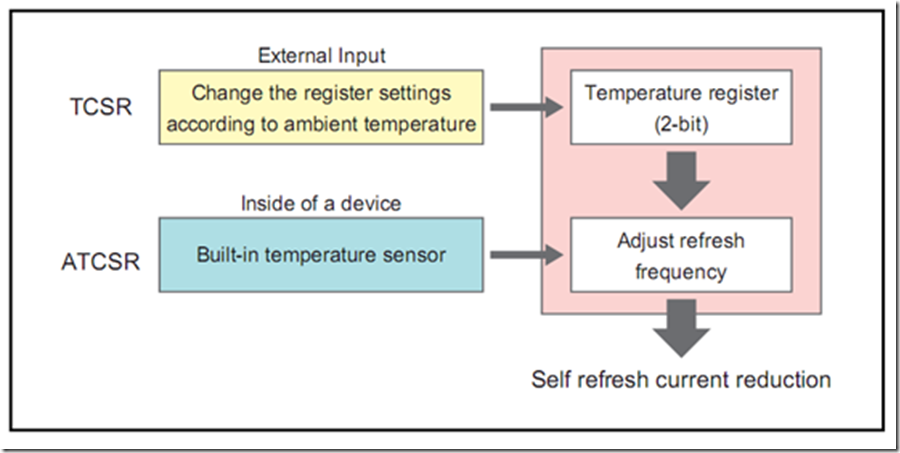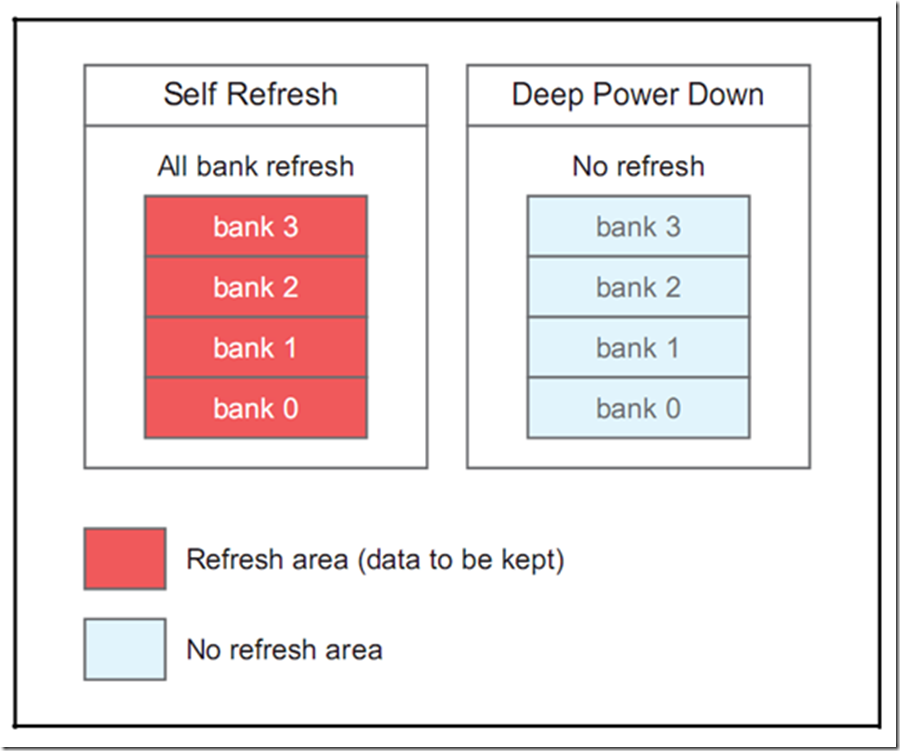随着智能机的发展,DDR内存容量越来越大,bank数量越来越多,功耗也越来越大。在不需要的时候关闭部分bank,或者降低自刷新频率,或者进入深度低功耗模式。有三种DDR技术用来降低功耗:
PASR(Partial Array Self-Refresh),根据内存使用情况,调整内存位置,尽量空闲更多bank,选择关闭,以达到节省功耗的目的。
TCSR(Temperature Compensated Self-Refresh),在不同的温度下,DDR需要不同的刷新率。根据温度调整自刷新频率以达到节省功耗的目的。
DPD(Deep Power Down),最大限度的关闭不需要使用的模块,进入低功耗模式。
目前PASR方案,已经得到广泛应用。
下面针对三种这三种技术,摘录如下:
PASR (Partial Array Self-Refresh)
Each DRAM memory cell consists of one MOS transistor and one capacitor to store bit using an external electronic charge. Because electrical current will leak from the capacitor over time, capacitors must be refreshed periodically to maintain data integrity.
The self-refresh operation, which deactivates the clock to reduce device power consumption, is automatically executed at certain intervals. Self-refresh mode will be effective to maintain data integrity when the DRAM memory cell was not accessed for a long period.
PASR is the specific mode that Mobile RAM commonly consists of four banks as the full memory cell arrays. Refresh operations are not performed across the full memory cell arrays but only to specific banks where data retention is requires, such as one or two banks. Data storage outside the defined refresh area will not to be retained. This PASR can help to reduce the self-refresh current to achieve lower power consumption function.
Overview of PASR
TCSR (Temperature Compensated Self-Refresh)
The data retention characteristics of DRAM cells depend on temperature.
When the temperature is high, the self-refresh operation will execute in a short period to prevent data loss and power consumption will increase. In contrast, when the temperature is low, data can be retained even the interval of self-refresh operation is long.
Overview of TCSR and Auto TCSR
DPD (Deep Power Down)
When the device was not accessed (read/write) for a long period, power consumption can be reduced by activating a power down mode. Under the power down mode, all input buffers are turned off except the clock and the clock enable.
Overview of DPD


